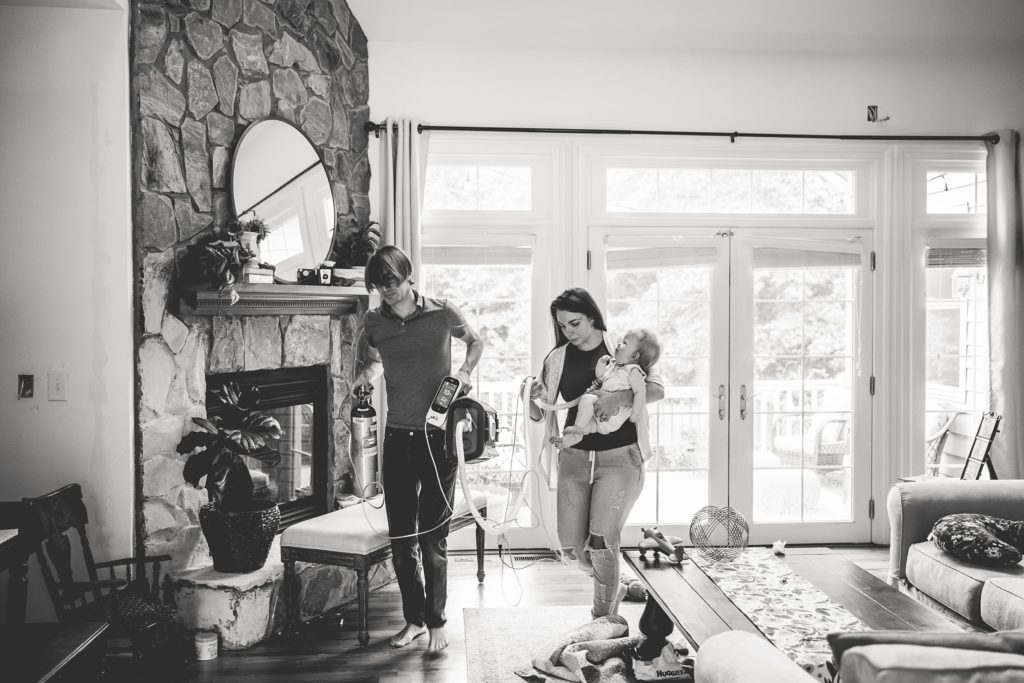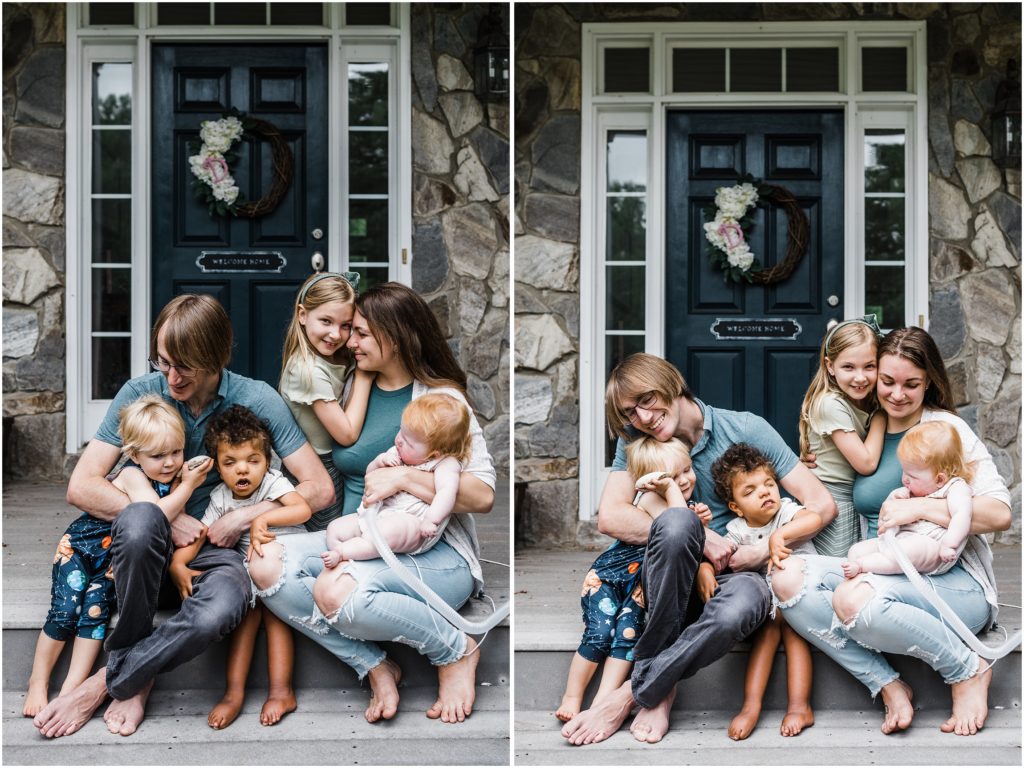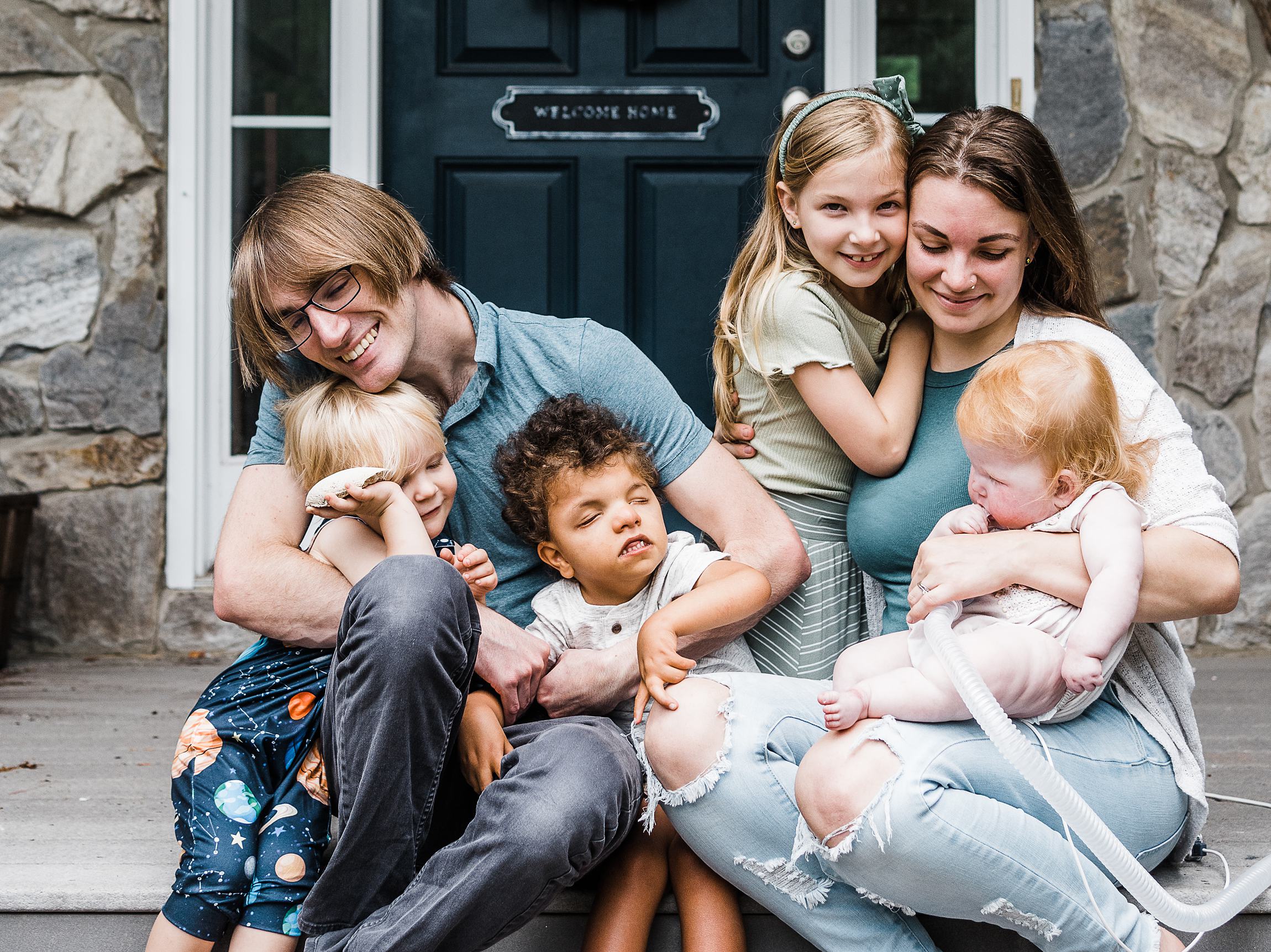Photographing a family with special needs children can be a challenge, but also a beautiful opportunity. These families are largely underrepresented but desire and deserve the impact of beautiful, meaningful family photos just as much as any other family.
As I walked into this home on a Saturday morning, two kids were pouring bowls of cereal and mom was checking vitals on the youngest daughters’ ventilator.


With two biological children and two adopted with special needs, they have learned to know each other deeply, to communicate in new ways, to care for themselves and each other.
Both R and L are wheelchair-bound and hypotonic. R is fully blind and L is attached to tubes 24/7 to help her breathe.
The whole family has hearts of actual gold and it’s easy to love them.
They were focused on each other, loving and laughing, unapologetically embracing home and the wild state that it was in this season. It was beyond refreshing.


Here’s a few tips for successfully and authentically photographing a family with special needs children
1. Suggest a session at home
I will say it over and over because it applies to any family in any stage and size, but especially when photographing a family with special needs children.
A home session allows for the most flexibility, familiarity, and intimacy possible while eliminating so many extra stresses around timing, clothing, what to bring or pack, etc. None of it matters because it’s all at your fingertips.
If simplicity is important to a family with special needs children and they want to make it as stress-free as possible, home sessions are a great option.



2. Document and direct
Throughout this session, I approached directing and posing like I do any other lifestyle family session at home while keeping their abilities and the light of the home in mind.
I also took advantage of their natural breaks and stayed engaged by noticing and capturing more journalistically.
It was in those moments that I was able to capture the oldest daughter giving her new hampster a scratch, the rowdy 2-year-old running playfully down the sidewalk, and the gentleness of care in the transitions.
So much honesty unfolds in-between directions, so be open to both taking control and stepping back to listen and flow with their dynamic.




3. Stay flexible and calm
You might not be able to do a lot of the typical “poses” you would in a lifestyle session or the games that you typically lean on – but that’s okay.
Staying calm and setting the tone will help you guide the session and instigate prompts that work best for the family.
The joy and love and silliness and beauty are all there. You just have to maintain a confident and sure presence in whatever unfolds.



4. Communicate clearly + respectfully
The family knows their kids intimately, along with their needs and abilities. Be respectful and clear when giving direction to ensure your clients are safe.
In this situation, neither of the children with special needs were able to speak to me or have much movement on their own, so it was crucial for me to think ahead about exactly what I needed or wanted from the parents so I could communicate it clearly and help their transitions go more smoothly.
Of course, communication goes both ways, so it was equally important for me to enter their home open, curious, and kind (something I strive for with any family!) so the parents felt comfortable communicating with me as well.



Families who have children with special needs may shy away from family sessions because they think they are too complicated or a photographer will not be able to make photos with their specific needs in mind. It is the photographers job to demonstrate that family sessions are possible for all families.
All families and children deserve photos to honor and celebrate what makes them beautiful together.

You might also like:
The Izzie Family + a look at adaptive parenting as a quadriplegic mom of twins
